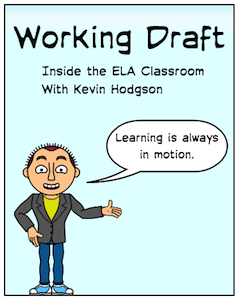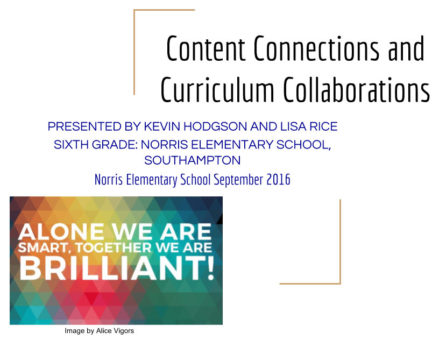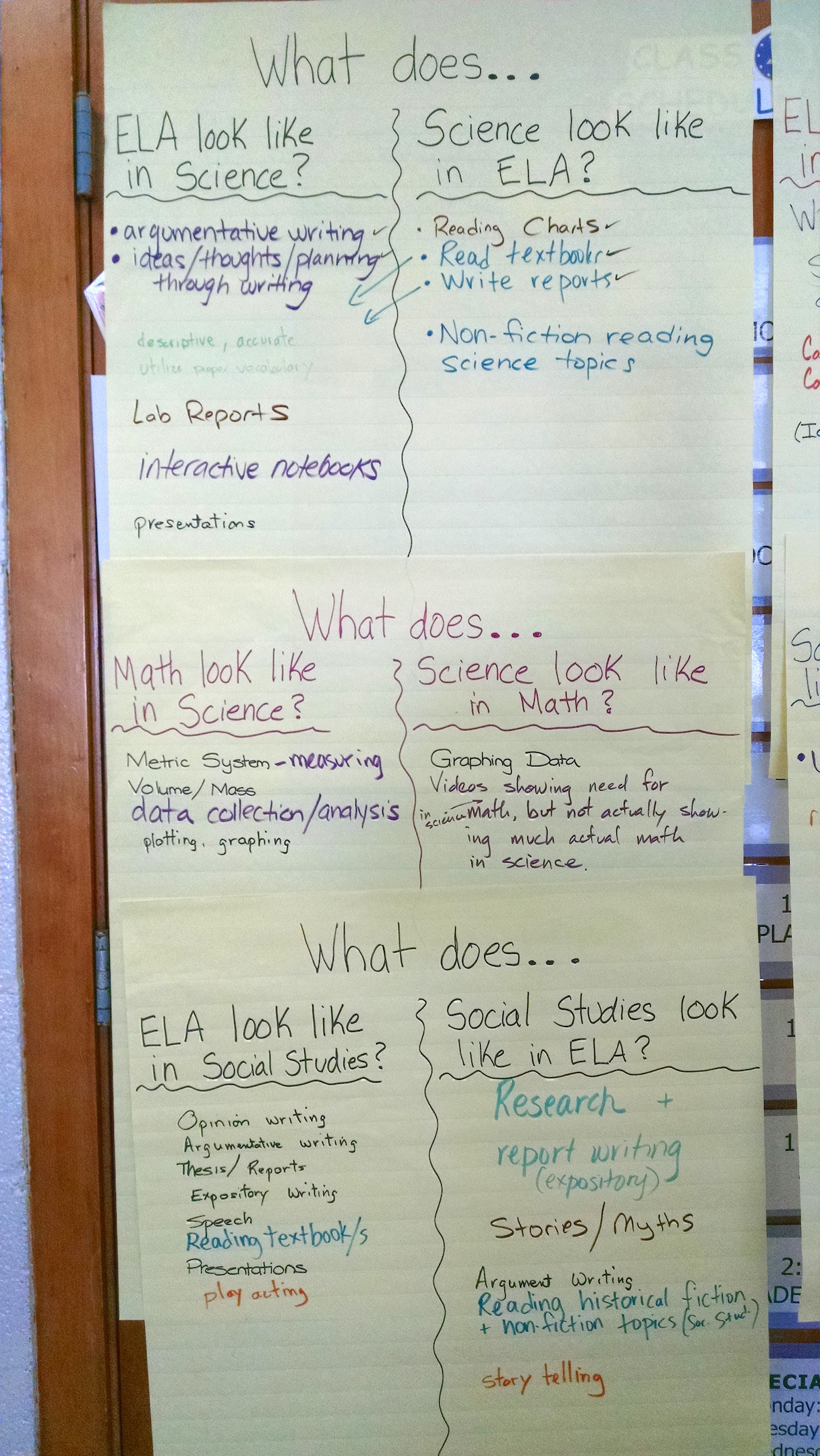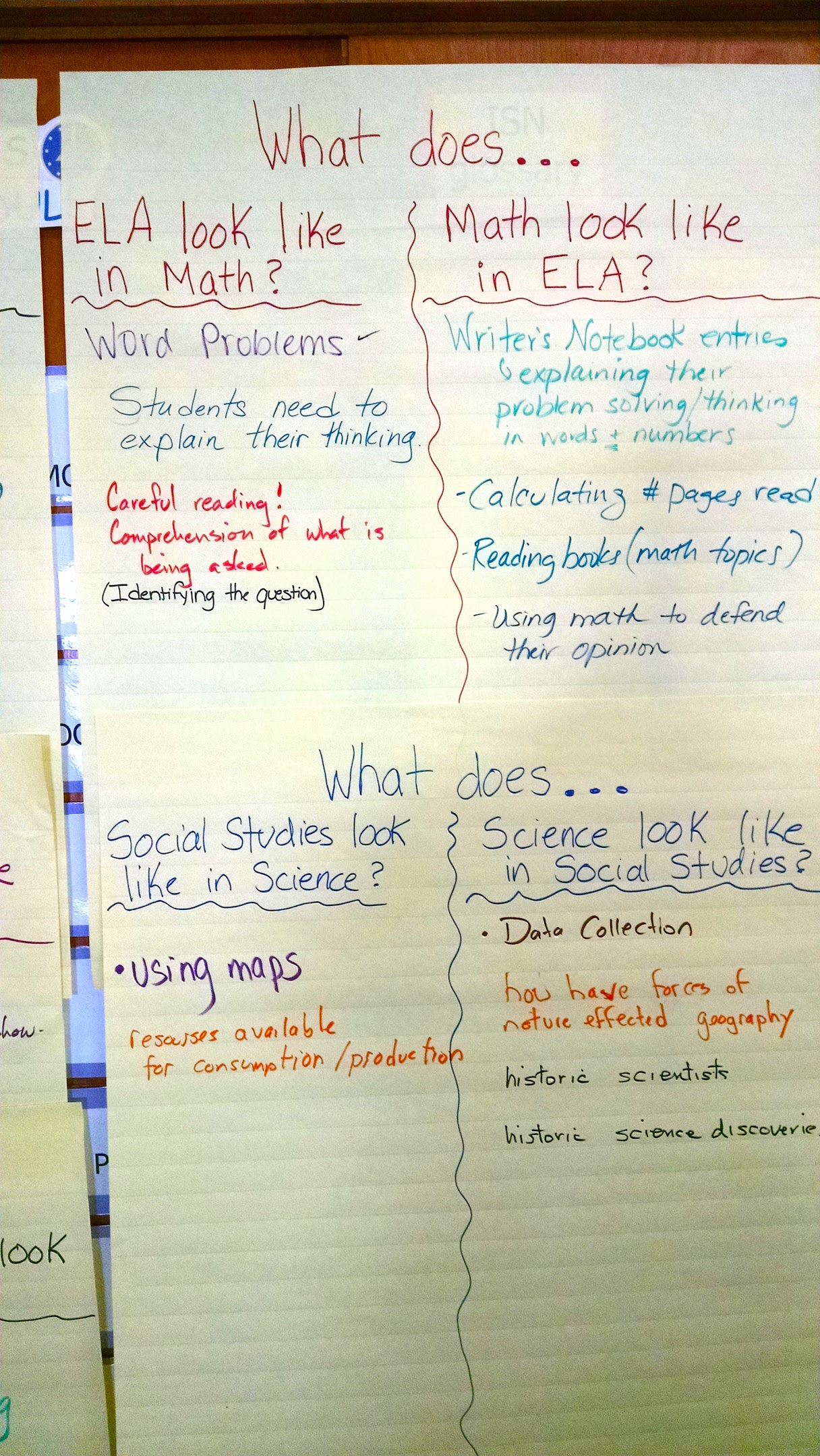How Do We Share the Work of Content Literacy?
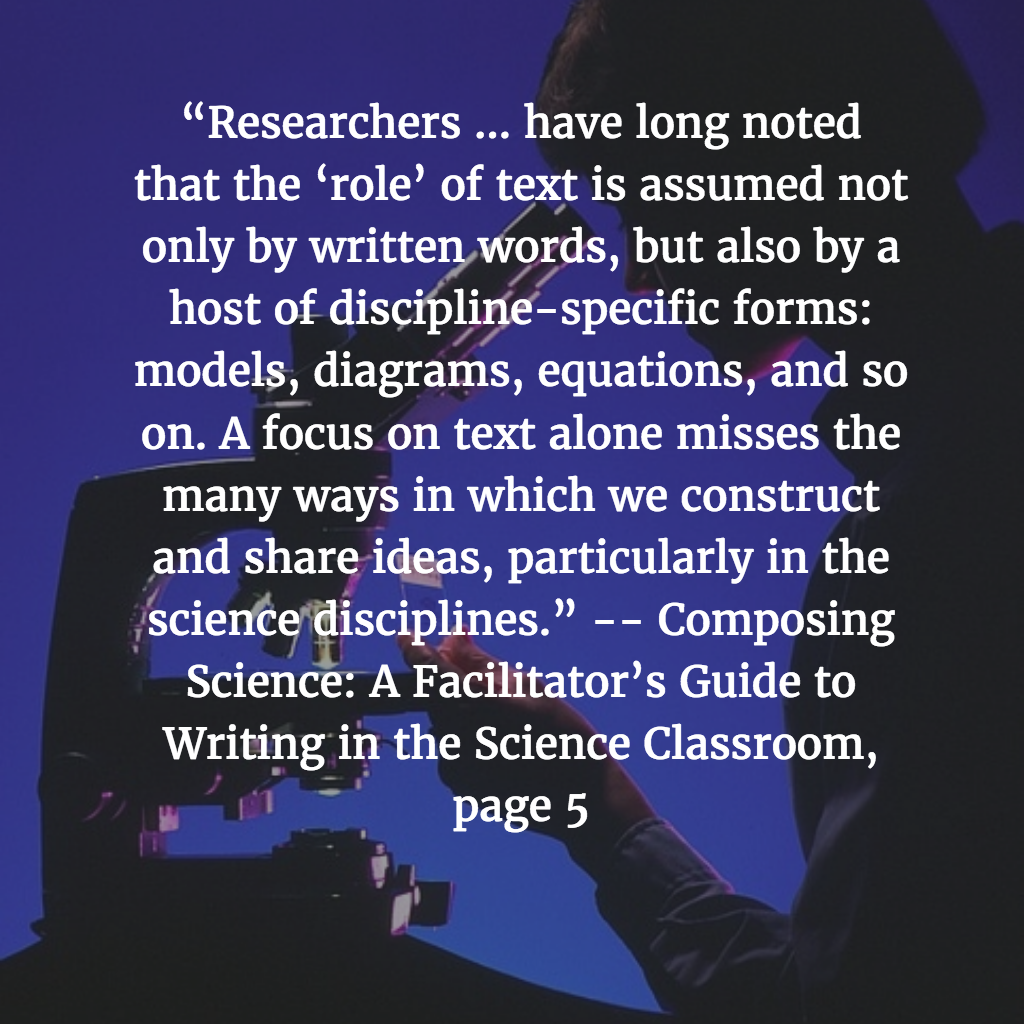
A MiddleWeb Blog
Like many educators, my sixth grade school team has spent much of the past few years finding ways to meet the underlying theme and message of the Common Core, as well as our state’s curriculum frameworks (built upon the Common Core), so that every teacher in the building is a ‘teacher of literacy.’
In fact, our state (Massachusetts) is working on proposed revisions to our ELA Frameworks, and the “reference guide” to those revisions notes:
“All teachers have a role in developing intelligent readers, and articulate writers and speakers in their subject areas. The framework makes it clear that literacy is a shared responsibility within a school.”
This ongoing shift has meant a wide range of planning projects and a sharing of the responsibilities of writing among myself, the ELA teacher, our science teacher, our math teacher, and our social studies teacher. (I should point out the slight imbalance of this equation, so to speak, as the honest fact is that we have often struggled to make literacy as visible as it might be in the math setting. We’re making progress.)
Cross-disciplinary Collaborations
My science colleague, Lisa Rice, spends a large part of the year weaving in argumentative writing, with evidence and claims and counterclaims, as part of the way she teaches our students science. My social studies colleague, Brian Chamberlin, moves beyond history research projects with a variety of modes of narrative writing and various presentation opportunities. My math colleague, Matt Meunier, uses expository writing to explain problem solving.
Much of this we have planned, intentionally, although some of it is now just the way we all approach literacy as a team: writing is everywhere, in all classes.
At the start of this school year, Lisa Rice and I presented to a group of our grade four through six colleagues at one of our school’s professional development sessions. Our topic was cross-disciplinary collaborations, and we nurtured a discussion about how teachers across grade levels, across disciplines, across the hallways, could find the means to work together as collaborators, with literacy at the heart of it all.
We don’t have the answers to all of the questions about literacy instruction, nor do we have a perfectly seamless integration of literacy practices in all content areas in our sixth grade.
What we have is an ongoing dialogue, still years in the making, and an impetus to reach out and share resources that we find with each other and others in our building. And we are always on the search for resources that might help us frame our conversations.
Learning about science and literacy
I find a new book by Leslie Atkin Elliott, Kim Jaxon and Irene Salter, Composing Science: A Facilitator’s Guide to Writing in the Science Classroom, to be helpful in shining a light on the literacy practices of young scientists using writing for discovery.
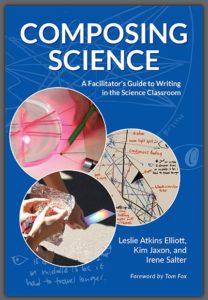
From “writing to learn” in the first part to “writing to communicate” in the second, the authors provide an inside glimpse into:
⇒ valuing notebooks as a place for understanding the world through notes and interactions, not just writing down what the instructor is saying;
⇒ using portable whiteboards for teams of students to explore with visuals what they are learning, and then using those diagrams and illustrations to share with others;
⇒ the power of diagrams themselves as important expository texts that unveil a student’s thinking process and understanding of complex topics;
⇒ the role of peer review of writing, and how to create a sense of a disciplinary community versed in academic vocabulary; and more.
Adapting the literacies of each discipline
What the authors are getting at is important: if we want students of any age to become immersed in the world of a discipline, we need to adapt the literacies of that discipline to the classroom. While they choose to focus on science, that message could resonate with any other discipline as well.
Scientists use notebooks, share ideas informally on whiteboards, construct diagrams and revise and refine them over time, using literature to inform their work. We advocate for incorporating those literacy practices in science instruction, so that classrooms are not places where we ‘play school’ but sites where students develop their scientific ideas in scientific ways.” – Composing Science, p. 86
During the professional development session that Lisa and I ran with colleagues, we asked everyone to join us in brainstorming ways that writing and literacies might surface across the content areas, and where they might not. The posters we made, used in a Gallery Walk activity, say a lot about where we might find the most natural fits.
The Gallery Walk exposed strengths and weaknesses and sparked some very interesting cross-grade discussions.
Literacy integration takes time and deep dialogue
This kind of literacy integration into all aspects of the school life takes time and requires frequent focus and constant questioning. Where does writing and reading fit into this unit? This discipline? This day?
We, on my team, all agree that reading and writing are key components of what our students should be learning; our dialogues reveal the challenges, but that common understanding is a powerful stepping stone from which to continue our own walk forward.

